Thermador PD48, PD36 User Manual

CARE AND USE MANUAL
For Thermador Professional® Dual Fuel Ranges
Models
PD304
PD36
PD48
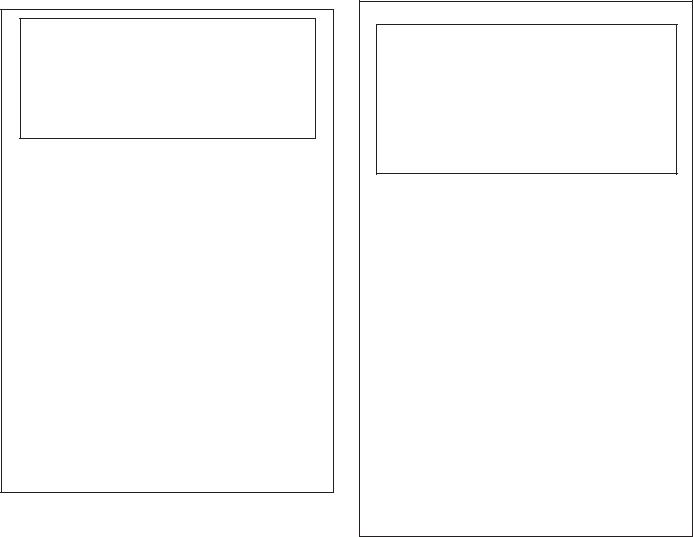
A Special Message to our Customers
Thank you for selecting the Thermador Professional® Range. We recommend that you take time to read this entire booklet before using your new appliance for the first time.
The booklet contains suggestions we believe will be helpful as well as directions for using all the features of this range. Keep it in a handy place, as it has the answers to questions that may occur when you start to cook.
Let us know if we can help you. When you write, please include the model and serial number of your range.
Sincerely,
Thermador Consumer Scientists
 WARNING:
WARNING:
If the information in this manual is not followed exactly, a fire or explosion may result causing property damage, personal injury or death.
—Do not store or use gasoline or other flammable vapors and liquids in the vicinity of this or any other appliance.
—WHAT TO DO IF YOU SMELL GAS
■Do not try to light any appliance.
■Do not touch any electrical switch.
■Do not use any phone in your building.
■Immediately call your gas supplier from a neighbor’s phone. Follow the gas supplier’s instructions.
■If you cannot reach your gas supplier, call the fire department.
— Installation and service must be performed by a qualified installer, service agency or the gas suppler.
 AVERTISSEMENT
AVERTISSEMENT
L’information fournie dans le présent manuel doit être rigoureusement respectée, sous peine d’un incendie ou d’explosion susceptible d’entraîner des dommages, des blessures ou la mort.
—N’entreposez pas et n’utilisez pas d’essence ou autres produits inflammables dans le voisinage de cette cuisinière ou de tout autre appareil.
—SI VOUS SENTEZ UNE ODEUR DE GAZ
■ N’allumez aucun appareil.
■ Ne touchez pas aux interrupteurs électriques.
■ N’utilisez pas les téléphones du bâtiment. ■ Appelez immédiatement votre compagnie de gaz de chez un voisin. Suivez les in-
structions de la compagnie.
■ Si vous n’arrivez pas à contacter votre compagnie de gaz, appelez les pompiers.
—L’installation et les réparations doivent être réalisées par un installateur qualifié, un centre de réparation agréé ou la compagnie de gaz.

Introduction. ................................................. |
1 |
Gas Type Verification. .................................. |
1 |
Care and Use Manual Conventions. ........... |
2 |
Section One: General Safety Instructions |
|
Safety ........................................................... |
3 – 4 |
Precautions .................................................. |
5 – 6 |
Section Two: Before You Begin |
|
Before Using Your Range for the First Time ...... |
7 |
Section Three: Description |
|
1
INTRODUCTION: CARE AND USE MANUAL
Introduction
This manual contains important Care and Use information for all Thermador Professional® Ranges. When using this manual, it is critical that you know the model number of your range, as some information will be unique to each range. The model number may be found on the rating plate located on the range as identified on Page 43 of this manual. The charts on the following pages summarize the various range models and identify the features of each range.
PD Ranges, featuring a Gas Cooking Surface with Self-Cleaning Electric Oven, with Electric Convection and Electric Broiler.
Dual Fuel PD304..................... |
Dual Fuel, 30" wide Range with Four Gas |
|
Cooktop Burners and self-cleaning Electric Oven |
Dual Fuel PD364GE ................ |
Dual Fuel, 36" wide Range with Four Gas |
|
Cooktop Burners, Electric Griddle and self-cleaning Electric Oven |
Dual Fuel PD364GL ................ |
Dual Fuel, 36" wide Range with Four |
|
Gas Cooktop Burners, Grill and self-cleaning Electric Oven |
Dual Fuel PD366 ..................... |
Dual Fuel, 36" wide Range with Six Gas |
|
Cooktop Burners and self-cleaning Electric Oven |
Dual Fuel PD486GE ................ |
Dual Fuel, 48" wide Range with Six Gas Cooktop Burners, |
|
Electric Griddle, large self-cleaning Electric Oven |
|
and one secondary oven. |
Dual Fuel PD486GL ............... |
Dual Fuel, 48" wide Range with Six |
|
Gas Cooktop Burners, Grill, large self-cleaning Electric Oven |
|
and one secondary oven. |
Dual Fuel PD484GGE ............ |
Dual Fuel, 48" wide Range with Four Gas Cooktop Burners, |
|
Grill, Electric Griddle, large self-cleaning Electric Oven |
|
and one secondary oven. |
2
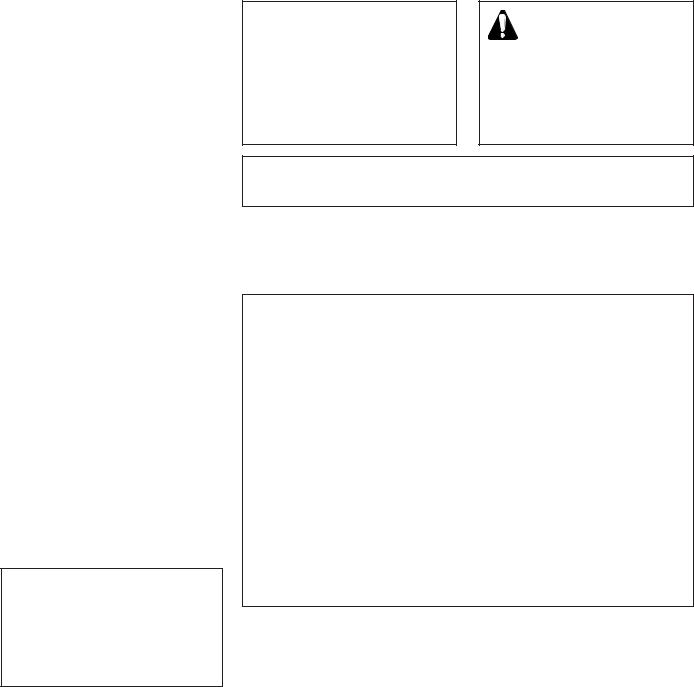
Section ONe: GENERAL SAFETY INSTRUCTIONS
 Safety Precautions
Safety Precautions
Gas and ELECTRICAL REQUIREMENTS AND GROUNDING INSTRUCTIONS
PLEASE READ CAREFULLY
Dual-Fuel Models:
PD304
120/240 volts, 60 Hz.,
35 Amp electrical circuit required.
Dual-Fuel Models:
PD364GE, PD364GL, PD366
120/240 volts, 60 Hz.,
35 Amp electrical circuit required.
Dual-Fuel Models:
PD486GE, PD486GL, PD484GGE
120/240 volts, 60 Hz.,
50 Amp electrical circuit required.
 WARNING
WARNING
ALWAYS DISCONNECT THE ELECTRICAL PLUG FROM THE WALL RECEPTACLE BEFORE SERVICING THIS UNIT.
It is recommended that a dedicated circuit servicing this appliance be provided.
The use of gas cooking appliances results in the production of heat and moisture.
 CAUTION
CAUTION
FOR PERSONAL SAFETY, THIS APPLIANCE MUST BE CONNECTED TO A PROPERLY GROUNDED AND POLARIZED ELECTRICAL POWER SUPPLY.
CAUTION
Accessible parts may become hot when the grill and/or griddle is in use. Young children must be kept away.
See Installation Instructions for electrical requirements and grounding instructions.
It is the personal responsibility and obligation of you, the user, to have this appliance connected to the electrical power supply in accordance with the National Electrical Code and/or applicable local codes and ordinances by a qualified electrician.
 CAUTION - ALL MODELS
CAUTION - ALL MODELS
IN CASE OF AN ELECTRICAL FAILURE
If for any reason a gas control knob is turned ON and there is no electrical power to operate the electronic igniters on the range's cooktop burners, turn OFF the gas control knob and wait 5 minutes for the gas to dissipate before lighting the burner manually.
To light the burners manually, carefully hold a lighted match to the burner ports and turn the gas control knob to HI. During a power failure you can use the standard cooktop burners, but each must be lit with a match.
DO NOT attempt to light the two left burners manually. These burners are equipped with the ExtraLow® feature and cannot be lit manually.
TESTED |
IN |
ACCORDANCE |
Check your local building codes |
||
WITH: |
|
|
for the proper method of |
||
• |
ANSI |
Z21.1 |
for Household |
installation. In the absence of local |
|
codes, this unit should be installed |
|||||
|
Gas Appliances |
||||
|
in accordance with the National |
||||
• |
UL858 Edition for Household |
||||
Fuel Gas Code No. Z223.1 current |
|||||
|
Electric Ranges |
issue and the National Electrical |
|||
• |
CAN/CSA-22.2 No. 61-M89 for |
Code ANSI/NFPA No. 70 current |
|||
issue or the Can - B149 Installation |
|||||
|
Household Cooking Ranges |
||||
|
Codes for Gas Burning Appliances |
||||
• |
CAN/CGA 1.1-M81 Domestic |
||||
and C22.1 Canadian Electrical |
|||||
|
Gas Ranges |
Code Part 1. |
|||
|
|
|
|
|
|
Save these instructions
3
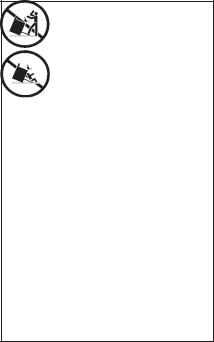
Section One: GENERAL SAFETY INSTRUCTIONS
 Safety Practices to Avoid
Safety Practices to Avoid
Personal Injury
When properly cared for, your new Thermador Professional® Range has been designed to be a safe, reliable appliance. However, use extreme care when using this restaurant caliber range as this type of appliance provides intense heat. When using kitchen appliances, basic safety precautions must be followed, including the following:
Read this Care and Use Manual carefully before using your new range to reduce the risk of fire, electrical shock, or injury to persons.
Insure proper installation and servicing. Follow the installation instructions provided with this product. Have the range installed and electrically grounded by a qualified technician.
Have the installer show you where the electric circuit breaker and the gas supply shut off valve are located so you know how and where to turn off the gas and electricity to the range.
•If you smell gas:
•Do not try to light any appliance.
•Do not touch any electrical switch.
•Do not use any phone in your building.
•Immediately call your gas supplier from a neighbor’s phone. Follow the gas supplier’s instruction.
•If you cannot reach your gas supplier, call the fire department.
•Installation and service must be performed by a qualified installer, service agency or the gas supplier.
In the event a burner goes out and
gas escapes, open a window or a door. Do not attempt to use the range until the gas has had time to dissipate. Wait at least 5 minutes before using the range.
Do not repair or replace any part of the appliance unless specifically recommended in this manual. All other servicing should be referred to a qualified technician.
Childrenshould notbe left alone or unattended in an area where appliances are in use. They should never be allowed to sit or stand on any part of the appliance. If children are allowed to use the appliance, they must be closely supervised.
CAUTION: Do not store items of interest to children above or at the back of the range. If children should climb onto the appliance to reach these items, they could be seriously injured.
Never use any part of the range or oven for storage. Flammable materials can catch fire and plastic items may melt or ignite.
Do not hang articles from any part of the appliance or place anythingagainsttheoven.Some fabrics are quite flammable and may catch on fire.
If the range is near a window, be certain the curtains do not blow over or near the range burners; they could catch on fire.
Donotusewaterongreasefires.
Turn appliance off and smother fire with baking soda or use a dry chemical or foam-type extinguisher.
Never let clothing, potholders, or other flammable materials come in contact with or too close to any element, burner or burner grate until it has cooled.
Fabric may ignite and result in personal injury.
Use only dry potholders: moist or damp potholders on hot surfaces may cause burns from steam. Do not use a towel or other bulky cloth in place of potholders. Do not let potholders touch hot elements, hot burners, or burner grates.
For personal safety, wear proper apparel. Loose fitting garments or hanging sleeves should never be worn while using this appliance. Some synthetic fabrics are highly flammable and should not be worn while cooking.
Do not use aluminum foil to line any part of the oven or range.
Use of a foil liner could result in a shock or fire hazard, or the obstruction of the flow of combustion and ventilation air. Foil is an excellent heat insulator and heat will be trapped beneath it. This will upset the cooking performance and can damage the finish of the oven or the range.
 WARNING
WARNING
TO REDUCE THE
RISK OF TIPPING OF
THE APPLIANCE, IT
MUST BE SECURED
BY A PROPERLY
INSTALLED ANTI-TIP DEVICE. VERIFY THAT THE ANTI-TIP DEVICE IS ENGAGED PER INSTALLATION IN–STRUCTIONS. (NOTE: ANTI-TIP DEVICE IS REQUIRED ON ALL 30" AND 36" RANGES)
4
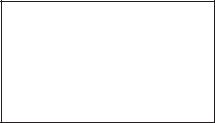
Section One: GENERAL SAFETY INSTRUCTIONS
 Safety Precautions
Safety Precautions
Warning: The appliance is for cooking. Based on safety considerations,neverusetheoven or cooktop to warm or heat a room. Also, such use can damage the cooktop or oven parts.
When using the cooktop: DO NOT
TOUCH THE BURNER GRATES OR THE IMMEDIATE SURROUNDING AREA. Areas adjacent to the burners may become hot enough to cause burns.
Never leave the range unattended when using high flame settings. Boil overs cause smoking and greasy spillovers that may ignite. More importantly, if the burner flames are smothered, unburned gas will escape into the room. See Inside Front Cover regarding gas leaks.
Only certain types of glass, heat-proof glass-ceramic, ceramic, earthenware, or other glazed utensils are suitable for range use. This type of utensil may break with sudden temperature changes. Use only on low or medium heat settings according to the utensil manufacturer’s directions.
Do not heat unopened food containers; a buildup of pressure may cause the container to burst.
During cooking, set the burner control so that the flame heats only the bottom of the pan and does not extend beyond the bottom of the pan.
Avoid using high flame setting with a pan larger than the grate or with one that spans more than one burner, such as a griddle, for prolonged periods of time. This can result in poor combustion that generates harmful by-products.
Use caution to insure that drafts
like those from forced air vents or fans do not blow flammable material toward the flames or push the flames so that they extend beyond the edges of the pot.
Always use utensils that have flat bottoms large enough to cover the burner. The use of undersized utensils could expose a portion of the flame and may result in ignition of clothing.
Do not use flammable cleaners to clean the range.
To minimize the risk of burns, ignition of flammable materials and unintentional spillage, position handles of utensils inward so they do not extend over adjacent work areas, cooking areas, or the edge of the range's cooktop.
Hold the handle of the pan to prevent movement of the utensil when stirring or turning food.
DO NOT use pots or pans on the grill section.
Do not use the grill for cooking excessively fatty meats or products which promote flareups.
The optional cutting board accessory must be removed before operating the griddle beneath or burners adjacent to it.
GREASE IS FLAMMABLE. Let hot grease cool before attempting to handle it. Avoid letting grease deposits collect. Clean after each use.
For proper lighting and performance of the burners, keep the igniter ports clean. It is necessary to clean these when there is a boil over or when the burner does not light even though the electronic igniters click. See Page 39.
 WARNING
WARNING
After a spill or boil over, turn off the burner and clean around the burner and burner ports. After cleaning, check for proper operation.
Clean the range with caution.
Avoid steam burns; do not use a wet sponge or cloth to clean the cooktop while it is hot. Some cleaners produce noxious fumes if applied to a hot surface. Follow directions provided by the cleaner manufacturer.
Be sure all cooktop controls are turned off and the cooktop is cool before using any type of aerosol cleaner on or around the cooktop. The chemical that produces the spraying action could, in the presence of heat, ignite or cause metal parts to corrode.
When using the oven: DO NOT
TOUCH THE BROILER ELEMENT, THE INTERIOR SURFACES OF THE OVEN OR THE EXTERIOR AREA IMMEDIATELY SURROUNDING THE DOOR. Interior oven surfaces become hot enough to cause burns. The heat deflector, which deflects heat away from the cooktop and the trim on the top and sides of the oven door, will also be hot when the oven is in use.
Place oven racks in desired position while oven is cool. If a rack must be moved while the oven is hot, do not let the potholders contact the broiler element.
Usecarewhenopeningtheoven door; let hot air or steam escape before removing or replacing foods.
Before self-cleaning the oven, remove the broiler pan, oven racks and any other utensils, and excess spillage.
5
Section One: GENERAL SAFETY INSTRUCTIONS
 Safety Precautions
Safety Precautions
Do not clean, rub, damage, move or remove the door gasket. It is essential for a good seal during baking and while selfcleaning the oven. If the gasket becomesdamagedorhasexcessive food spillage, replace the door gasket. This will assure a tight seal.
Protect the self-cleaning feature. Clean only those parts indicated in this booklet. Do not use commercial oven cleaners or oven liner protective coatings of any kind in or around the large self-cleaning oven.
DO NOT obstruct the flow of combustion or ventilation air.
For safety reasons and to avoid equipment damage, never sit, stand, or lean on the oven door.
Service should only be done by authorized technicans. Technicians must disconnect the power supply before servicing this unit.
Listen to be sure the cooling blower runs whenever the oven controls are set to broil or selfclean. If the fan does not operate, do not use the oven. Call an authorized service center for service.
Cleantheventilatorhoodandfilters above the range frequently so grease from cooking vapors does not accumulate on them.
• In case of fire or when intentionally “flaming” liquor or other spirits on the range's cooktop, follow hood manufacturer’s instructions.
California Proposition 65
Warning: The burning of gas cooking fuel and the elimination of soil during self-cleaning generate some by-products which are on the list of substances which are known by the State of California to cause cancer or reproductive harm. California law requires businesses to warn customers of potential exposure to such substances.Tominimizeexposure to these substances, always operate this unit according to the instructions contained in this booklet and provide good ventilation to the room when cooking with gas, during and immediately after self-cleaning the oven.
BEFORE USING YOUR RANGE FOR THE FIRST TIME, CHECK THAT YOU HAVE THESE ITEMS:
DESCRIPTION |
PD |
PD |
PD |
PD |
PD |
PD |
PD |
|
304 |
364GE |
364GL |
366 |
484GGE |
486GE |
486GL |
|
|
|
|
|
|
|
|
Oven Racks Large Oven |
3 |
3 |
3 |
3 |
3 |
3 |
3 |
|
|
|
|
|
|
|
|
Oven Racks 12-inch Oven |
|
|
|
|
2 |
2 |
2 |
|
|
|
|
|
|
|
|
Two-Piece Broil Pan |
1 |
1 |
1 |
1 |
2‡ |
2‡ |
2‡ |
Star Burner Caps |
4 |
4 |
4 |
6 |
4 |
6 |
6 |
|
|
|
|
|
|
|
|
Burner Grates |
2 |
2 |
2 |
3 |
2 |
3 |
3 |
|
|
|
|
|
|
|
|
Control Knobs |
5 |
6 |
6 |
7 |
8 |
9 |
9 |
|
|
|
|
|
|
|
|
Cast Iron Grill Grate |
|
|
1 |
|
1 |
|
1 |
|
|
|
|
|
|
|
|
Stainless Steel Radiant |
|
|
1 |
|
1 |
|
1 |
|
|
|
|
|
|
|
|
Coated Titanium-Surface Griddle |
|
1 |
|
|
1 |
1 |
|
|
|
|
|
|
|
|
|
Product Registration Card |
1 |
1 |
1 |
1 |
1 |
1 |
1 |
|
|
|
|
|
|
|
|
Backguard |
1 |
* |
* |
* |
* |
* |
* |
|
|
|
|
|
|
|
|
Installation Instructions |
1 |
1 |
1 |
1 |
1 |
1 |
1 |
|
|
|
|
|
|
|
|
Use and Care Manual |
1 |
1 |
1 |
1 |
1 |
1 |
1 |
|
|
|
|
|
|
|
|
*Backguard must be ordered and shipped separately. It is not included with the range shipment. ‡The aluminum broil pan is for the Secondary Oven; the porcelain & chrome broil pan is for the Main Oven.
6
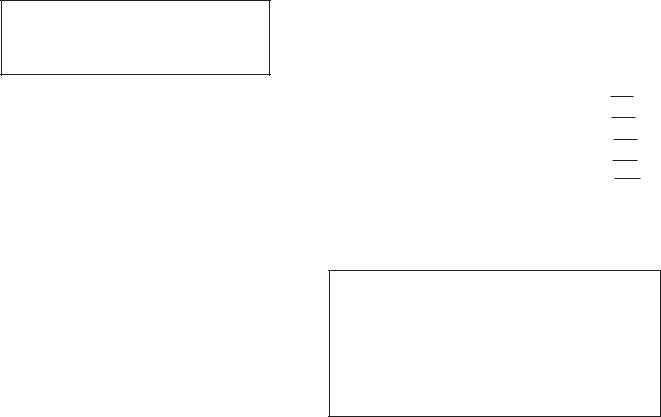
Section Two: BEFORE YOU BEGIN
Before Using Your Range for the First Time
Remove all packaging materials and temporary labels from oven and cooktop.
1.Check that you have the items listed on Page 6.
2.Record the Model and Serial number on Page 43. See "Data Rating Plate." These may be used for any future contacts with your servicer or the factory. Enter this information on the Product Registration Card included with this product then mail it to the indicated address.
3.Optional Accessories. Grill Cover, Grill Plate, Chopping Board, Griddle Cover, Wok Support Ring and other accessories are available from your Thermador Dealer. Contact the Thermador Parts Department toll-free at 800/735-4327 for more information.
4.Position the racks correctly in the oven.
The correct rack position depends on the recipe and the cooking mode. The rack positions are numbered from the bottom of the oven, like an elevator. Rack position 3 is the most frequently used position. Place rack(s) in the proper position before turning on the oven.
Insert the racks as follows:
a. Hold the rack with the back rail in the up position towards the rear of the oven. Slip it into the oven so the rack slides are between the rack and the rack guides.
b. Tip the front of the rack up slightly as it slides into the oven so that the safety stops clear the rack slides. The safety stops on the back of the rack will keep it from sliding out of the oven when it is pulled forward.
5.Ensure that the burner caps are correctly seated on the burner bases of the range's cooktop. Turn on each burner to check for proper flame color. See Page 14 for details.
5
4
3
2
1
Large Electric Main and Oven Rack Positions
 CAUTION
CAUTION
Aluminum foil should never be used to cover the oven racks or to line the oven. Do not remove the broiler element in the electric oven.
BEFORE BAKING OR BROILING, the oven and broiler should be turned on to burn off the manufacturing oils. Turn the oven on to 450°F (230°C) for 20 to 30 minutes; then turn the broiler to "Broil" for same length of time. You may wish to turn on the ventilator above your range during this time.
Please read Page 41 in Section 6: Care and Maintenance before cleaning the oven racks.
7
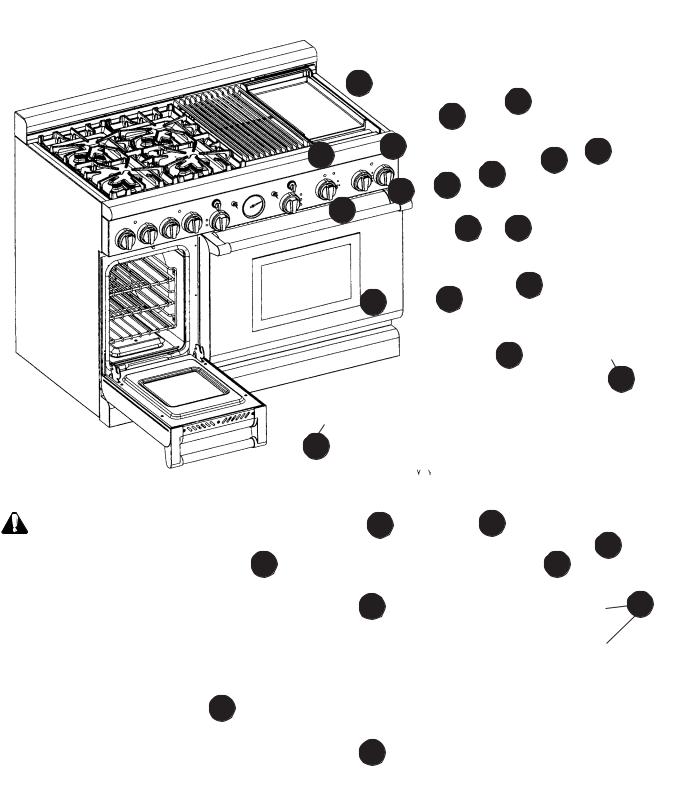
Section Three: DESCRIPTION
Model and Parts Identification
Dual Fuel Model PD484GGE - Shown
Model PD486GE – Has a griddle and six burners, two ExtraLow® and four standard. Model PD486GL – Has a grill and six burners, two ExtraLow® and four standard.
Key for PD484GGE Models
(shown)
1.22" High Shelf Backguard,
12" Low Back, or Island Trim - shown (Backguard ordered separately)
2.Burner Grates & Burners
3.Gas Grill
4.Electric Griddle
5.Control Knobs, ExtraLow® Burners (2)
6.Control Knobs, Standard Burners (2)
7.Control Knobs, Grill (1) and Griddle (1)
8.Oven Controls, Temperature Indicator
9.Light and Selector Switches, Main and Secodary Ovens
10.Oven Door
11.Viewing Window
12.Secondary Oven (2 racks included)
13.Kick Panel (Product Rating Label Located Behind Kick Panel)
14.Range Feet (4)
WARNING: |
|
|
To provide |
proper |
15 |
ventilation, |
do NOT |
|
remove range feet. |
|
|
|
|
|
Electric Oven Interior |
|
|
1
|
|
3 |
4 |
|
|
|
|
|
|
2 |
2 |
|
7 |
7 |
|
|
|||
|
6 |
9 |
9 |
|
|
|
|
||
|
5 |
8 |
8 |
|
|
|
|
||
|
12 |
10 |
11 |
|
|
|
|
||
|
|
|
13 |
|
14
14
16 16
17
15
21 |
18 |
15. |
Oven Interior Lights (2) |
|
|
16. |
Broil Element |
|
|
17. |
Oven Thermostat |
19 |
|
18. |
Rack Guides |
||
|
|||
19. Oven Rack |
20 |
||
|
(3 included, not shown) |
||
20.Bake Element (hidden)
21.Convection Fan Cover
8

Section Three: DESCRIPTION
Dual Fuel Model PD366 - Shown
Model PD364GE– Has a center griddle and four burners, two ExtraLow® and two standard. Model PD364GL – Has a center grill and four burners, two ExtraLow® and two standard.
Key for PD366 Models (shown)
1. 22" High Shelf Backguard,
12" Low Back or 4" Island Trim - shown 1 (Backguard ordered separately)
2. |
Burner Grates & Burners |
|
|
2 |
3. |
Control Knobs, ExtraLow® Burners (2) |
|
|
|
4. |
Control Knobs, Standard Burners (4) |
|
|
2 |
5. |
Oven Controls, temperature |
|
|
2 |
|
indicator |
3 |
4 |
|
|
|
|||
6. |
Oven Light and Selector Switches |
|
|
|
7. |
Oven Door |
|
|
|
8. |
Viewing Window |
|
6 |
4 |
9. |
Kick Panel (Product Rating Label |
|
5 |
|
|
|
|||
|
Located Behind Kick Panel) |
7 |
|
|
10. Range Feet (4) |
|
8 |
||
|
|
|
|
|
WARNING: |
|
|
|
To provide |
proper |
10 |
9 |
ventilation, |
do NOT |
|
|
remove range feet. |
|
|
|
Electric Oven Interior, |
|
10 |
|
|
|
||
Please see Page 8 |
|
|
|
9
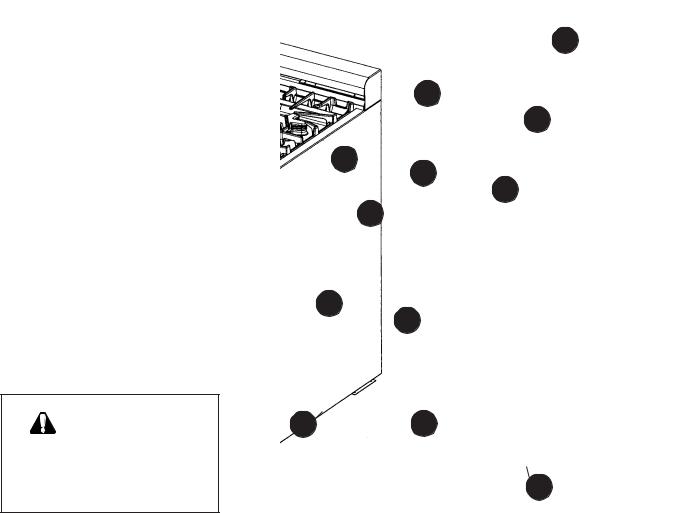
Section Three: DESCRIPTION
Model and Parts Identification
Dual Fuel Model PD304 - Shown
1
Key for PD304 Models
1. 9" Low Back |
2 |
||
|
(Island Trim - shown - and High Shelf |
2 |
|
|
ordered separately) |
||
|
|
||
2. |
Burner Grates & Burners |
3 |
|
|
|
||
3. |
Control Knobs, ExtraLow® Burners (2) |
5 |
|
4. |
Control Knobs, Standard Burners (2) |
4 |
|
6 |
|||
|
|
||
5.Oven Controls, Temperature Indicator
6.Oven Light and Selector Switches
7.Oven Door
8. |
Viewing Window |
7 |
9. |
Kick Panel (Product Rating Label |
8 |
|
Located Behind Kick Panel)
10. Range Feet (4)
WARNING: |
10 |
9 |
To provide proper ventila- |
|
|
tion, do NOT remove |
|
10 |
range feet. |
|
Electric Oven Interior,
Please see Page 8
10
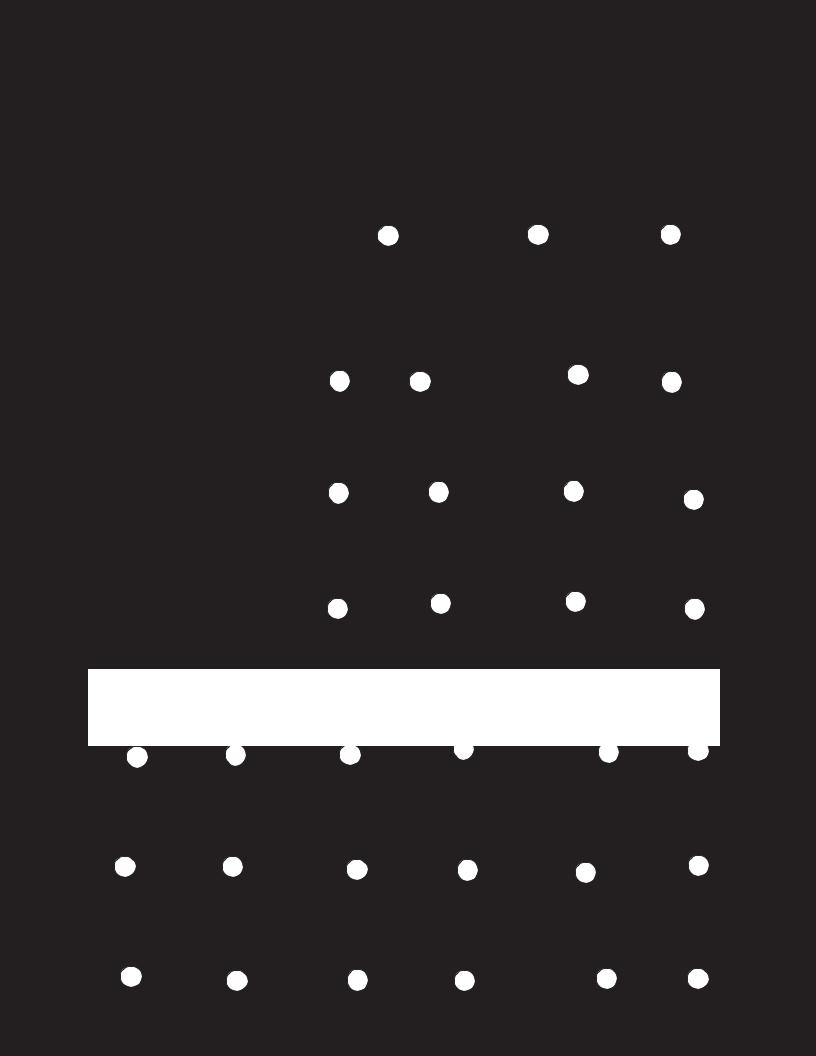
Section Three: DESCRIPTION
Guide to Knob Identification and Location
Locate each knob type by the corresponding number on the diagrams. Actual knobs are not numbered.
1.XLO Knob
OFF HI-MED-LO-XLO
2.Standard Knob
OFF HI-MED-LO
3.Grill Knob
OFF LITE-HI-MED-LO
4.Griddle Knob
OFF 150 200 250 300 350 400 450 500
5.Secondary Oven Knob
OFF 150 200 250 300 350 400 450 500 Broil
6.Main Oven Knob
OFF 150 200 250 300 350 400 450 500 Broil Clean
PD484GGEBS
1 2
PD486GEBS
1 2
PD486GLBS
PD304BS PD30 MODEL
1 |
6 |
PD366BS |
PD36 MODELS |
1 |
2 |
6 |
|
PD364GEBS
1 |
4 |
6 |
PD364GLBS
1 |
3 |
6 |
PD48 MODELS
5 |
6 |
3 |
5 |
6 |
4 |
2
2
2
2
4
2
1 |
2 |
5 |
6 |
3 |
2 |
11
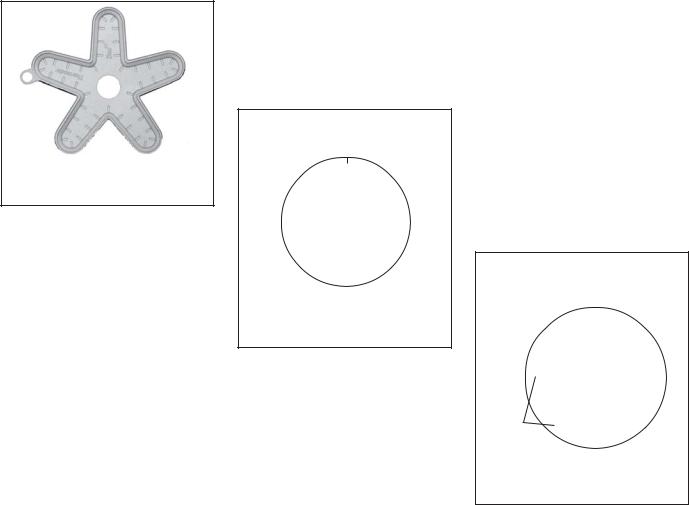
Section Four: USING THE COOKTOP
USING THE COOKTOP
Sealed Burners
Sealed Star®
Brass Burner Base
The cooktop features four or six gas surface burners; each rated at 15,000 BTU/HR. The burners are sealed to the stainless steel top frame to prevent liquid spills from accumulating below the top surface, making it easier to clean. On all models, the two left burners have the exclusive ExtraLow feature, the remaining burners are standard. Each burner has its own control knob.
CONTROL KNOBS
The control knobs for two sealed gas burners, one in front and one in the rear, are located directly in front of and below the pair of burners on the control panel.
Setting Indicator
Knob
 Bezel
Bezel
Standard Burner
Control Knob
The two words above each control knob identifies the burner position. For example, LEFT FRONT, RIGHT FRONT, etc.
OPERATION OF THE
BURNERS
•Press in on the knob and turn it counter-clockwise to the HI setting.
•The igniter for the selected sealed burner clicks and sparks.
•After flame ignition, the igniter stops clicking.
•Rotate the knob to any flame setting between HI and LO.
•The Blue Burner Signal Light, between the burners, will light when adjacent burners are lit. They will remain on until the burner is turned off.
BTU Output for Standard Burners
•HI is equivalentto15,000 BTU/HR.
•LO is equivalent to 2,100 BTU/HR.
BTU Output for ExtraLow® Burners
•HI is equivalent to15,000 BTU/HR.
•LO is equivalent to3,000 BTU/HR.
•XLO is equivalent to370 BTU/HR.
ExtraLow® Burners
The controls for the two left burners, front and rear, have flame settings even lower than the standard LO settings.
Setting Indicator
ExtraLow
Range
ExtraLow® Burner
Control Knob
The drawing shows that the control knob has an additional range between the LO and XLO settings. When the knob is set within this range, the flame cycles off and on. By varying the length of time the flame is off and on, the heat is reduced even further to cook delicate foods. For example, these very low settings are suitable for simmering and poaching, melting chocolate and butter, holding cooked foods at temperatures without scorching or burning, etc.
12
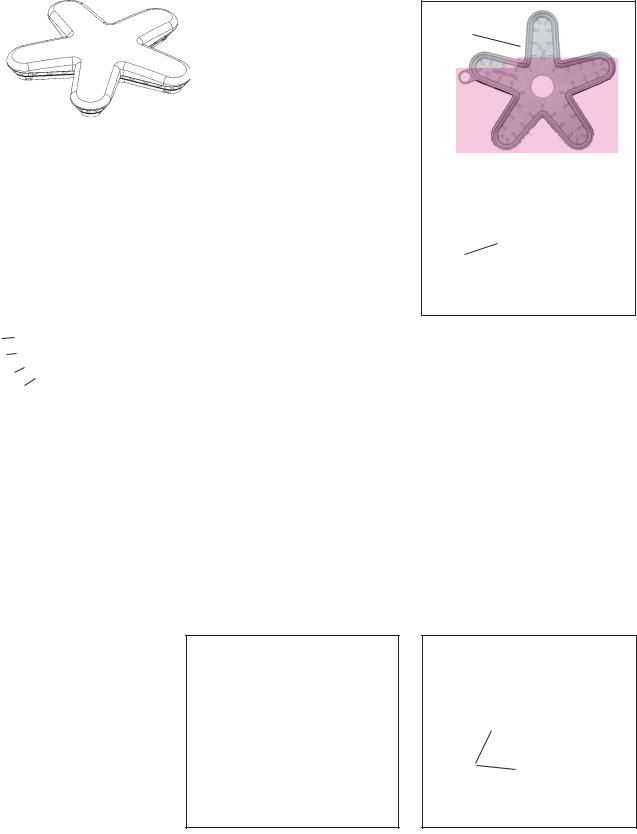
Section Four: USING THE COOKTOP
Operation of the ExtraLow
Burners
•XLO, the very lowest setting, is achieved by cycling the flame ON for approximately 8 seconds and OFF for 52 seconds of each minute.
•When the knob is set just below the LO setting, the flame will cycle ON for approximately 52 seconds and OFF for 8 seconds of each minute.
•To vary the amount of low heat to suit the food and quantity, the control can be set anywhere within the LO and XLO range marked on the knob.
1
2
3
4
ExtraLow Settings
•The number and dash designations, shown in the drawing, are for reference only.
Numbers do not actually appear on the knob. The number indicates the position of the flame setting as represented on the cooking chart, pages 17 and 18, with the flame on longer at the #4 setting than on #1 setting.
ExtraLow Techniques
•The type and quantity of food affects which setting to use.
•The pan selected affects the setting. Its size, type, material, and whether a lid is used, all affect the consistency of the cooking temperature.
•To maintain a low or simmer heat, bring food to a rolling boil. Stir well, then cover the pan and lower the heat to a setting just below LO.
•Check periodically to see if the control knob should be turned to another setting.
•If an over-size pan is used, the simmer action may occur mainly in the center of the pan. To equalize the temperature throughout the food, stir the food around the outer edges of the pan into the food in the center.
•It is normal to stir food occasionally while simmering. This is especially important when simmering for several hours, such as for a homemade spaghetti sauce or beans.
•When lowering the flame setting, adjust it in small steps.
•If the setting is too low to hold a simmer, bring the food back to a boil before re-setting to a higher heat.
•It is normal not to see simmer bubbles immediately after the food has been stirred.
•There may be bubbling when the flame cycles ON and no bubbles when the flame is OFF. Even when the flame is OFF, there will be steam and a slight quiver on the liquid’s surface.
IGNITER
Electronic
Single Point
Ignition
Brass
Burner
Base
Cap
Star® Burner
Components
Each burner has its own electronic igniter that sparks when the burner is turned on. Each burner should light in 4 seconds or less. If a burner does not light, check to see that the cap is positioned correctly on the base. Do not touch the burners when the igniters are sparking. If a burner fails to ignite, refer to the section on Page 43, “Before Calling for Service.”
BURNER CAP
13
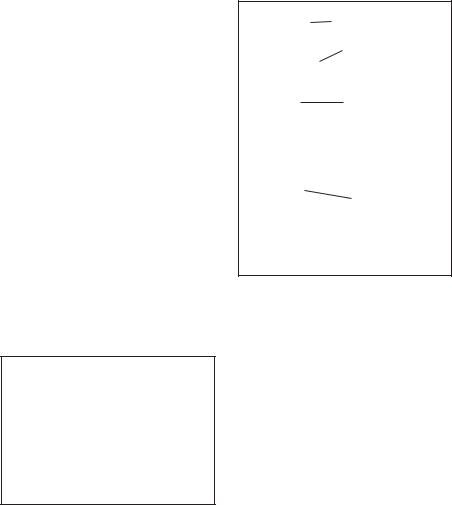
Section Four: USING THE COOKTOP
AUTOMATIC RE-IGNITION
If any one or more burners or grill blow out, the electronic igniter automatically sparks to re-light the flame. Do not touch the burners when the igniters are sparking.
IMPORTANT:
•For proper combustion do not use the cooktop without the burner grates in place.
•There is a slight sound associated with gas combustion and ignition. This is a normal condition.
•On cooktops using propane gas (LP), a slight “pop” sound may be heard at the burner ports a few seconds after the burner has been turned off.
POWER FAILURE
•In the event of a power failure, only the standard burners can be manually lit. It is necessary to light each one individually.
•If the cooktop is being used when the power failure occurs, turn all knobs to the OFF position.
•The standard burners can be lighted by holding a match at the ports and turning the control knob to the HI position. Wait until the flame is burning all around the burner cap before adjusting the flame to the desired height.
•Neither ExtraLow burner can be used during a power failure. Be sure to turn them off.
•If either ExtraLow burner is on when a power failure occurs, they cannot be turned back on until both knobs are first turned off.
•The griddle or grill cannot be used during a power failure.
•If you smell gas, refer to safety precautions listed inside the front cover.
 Warning
Warning
In the event of a power failure, all knobs are to be turned to the OFF Position. Only the standard burners can be lit manually.
FLAME HEIGHT
•The correct flame height depends on 1) size and material of pan being used; 2) food being cooked; and 3) amount of liquid in the pan.
•Never extend the flame beyond the base of the pan.
•Use a low or medium flame for pan materials that conduct the heat slowly, such as porcelain coated steel or glass-ceramic.
FLAME DESCRIPTION
Dark Blue
S e c o n d a r y
Cone
Light Blue
Primary
Cone
Flame Color
•The burner flame color should be blue with no yellow on the tips. It is not uncommon to see orange in the flame color; this indicates the burning of airborne impurities in the gas and will disappear with use.
•With propane (LP) gas, slight yellow tips on the primary cone are normal.
•The flame should burn completely around the burner cap. If it doesn’t, check that the cap is positioned correctly on the base and that the ports are not blocked.
•The flame should be stable with no excessive noise or fluttering.
14

Section Four: USING THE COOKTOP
Cookware Recommendations
CAUTION:
Food packaged in aluminum foil should not be placed directly on the burner grate. Aluminum foil can melt during cooking.
Do not let plastic, paper or cloth come in contact with a hot burner grate. They may melt or catch fire.
Never let a pan boil dry. This can damage your pan and the cooking surface.
•Professional quality pans with metal handles are recommended because plastic handles can melt or blister, if the flame extends up the side of the pan. Professional quality pans are found at restaurant supply stores and gourmet specialty shops. All cookware should have these characteristics: good heat conductivity, good balance, correctly sized base diameter, a heavy, flat base, and a proper fitting lid. For best cooking results, the flame should be contained under the bottom of the pan.
•Aluminum and copper are pan materials that conduct the heat quickly and evenly. These metals are sometimes attached to the base or in the core between stainless steel.
Balanced Pan
•Balance is important for stability and even cooking. The handle must not be heavier than the pan and tilt it unevenly. A pan must sit level on the grate without rocking or wobbling.
(51 mm)
Base Diameter
•Select the base diameter to match the diameter of the flame. The diameter of the flame should be the same size as the pan base or slightly smaller. Oversize or under size pans sacrifice cooking
performance. A 5 -1/2" (140 mm) base size is generally the smallest recommended.
Flat Base Pan
•A heavy, flat base is more apt to remain flat when heated. Pan bases that are warped, dented, ridged or too lightweight will heat unevenly. Heat and cool pans gradually to avoid sudden temperature changes which tend to distort cookware. Do not add cold water to a hot pan.
Covered Pan
•A properly fitting lid will shorten cooking time and make it possible to use lower heat settings.
15
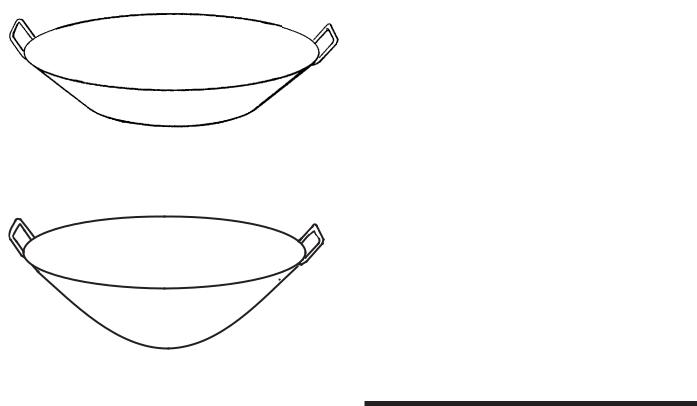
Section Four: USING THE COOKTOP
Specialty Cookware
Canning Tips:
• A flat base pan is preferred to one with a concave,
|
convex or rippled base. |
• |
When using two canners at the same time, use |
|
staggered burners. Do not block air to the burners. |
|
A flame needs the right amount of air for complete |
Flat-bottom Wok Pan |
combustion. |
• |
Use a cover on a canner when bringing the |
|
contents to a boil. |
• Once the contents have reached a boil on HI, use the lowest flame possible to maintain the boil or pressure.
• Canning produces a large amount of steam. Take precautions to prevent burns.
Round-Bottom Wok
in Support Ring
Cooking Recomendations
•Woks – Either flat based or round bottom woks with the accessory ring can be used on models without a built-in wok burner. Round bottom woks must be used with a support ring. The porcelaincoated cast iron wok support ring must be purchased separately.
•Canners and Stock Pots – Select one with a base diameter that extends no more than 2 inches (51mm) beyond the grate.
Standard Size Water Bath Canner
21 to 22 quarts (19.95 to 20.9 liters),
with an 11 to 12 inch base (279 to 305 mm) and a 9 to 11 inch depth (229 to 279 mm).
Standard Size Pressure Canner
8 to 22 quarts (7.6 to 20.9 liters), with an 8 to 11 inch base (203 to 279 mm) and a 6-1/2" to 12 inch depth (165 - 305 mm).
Suggestions for Using the Recommendations
Use the chart on Pages 17 and 18 as a guide. The settings you use will vary depending on the pans selected and the starting temperature of the food.
On the chart, the “Finish Setting” has been separated for the standard and ExtraLow burners. There may or may not be a change between the two burner settings.
The ExtraLow setting can be either a cooking or a holding setting.
Raise or lower the flame setting gradually. Allow time for the pan and the food to adjust to the new setting.
16
Section Four: USING THE COOKTOP
Surface Burner Cooking Recommendations
Food |
Start Setting |
Finish Setting |
Finish Setting |
|
|
Standard Burners |
ExtraLow® Burners |
|
|
|
|
BEVERAGES |
MED – heat milk, |
LO – finish heating |
XLO – keep warm, |
Cocoa |
cover |
|
cover* |
BREADS |
MED – preheat skillet |
MED LO to MED – |
Same as Standard |
French Toast, Pancakes, |
|
cook |
|
Grilled Sandwiches |
|
|
|
BUTTER |
|
|
4 to 3 – allow 5 to 10 |
Melting |
|
XLO – to hold |
minutes to melt |
|
|
|
|
CEREALS |
HI – cover, bring |
MED LO to MED – |
XLO – to hold, cover* |
Cornmeal, Grits, |
water to a boil, add |
finish cooking |
|
Oatmeal |
cereal |
according to package |
|
|
|
directions |
|
CHOCOLATE |
|
Use XLO |
2 to XLO – allow 10 |
Melting |
|
|
to 15 minutes to melt |
|
|
|
XLO – to hold* |
DESSERTS |
MED LO to MED – |
MED LO to MED |
Same as Standard |
Candy |
cook following recipe |
|
|
Pudding and Pie Filling |
MED LO |
LO |
MED LO |
Mix |
cook according to |
|
|
|
package directions |
|
|
|
|
|
|
Pudding |
MED LO – Bring milk |
LO |
MED LO – to cook |
|
to a boil |
|
|
EGGS |
MED HI – cover, bring |
Use XLO |
XLO– cook 3 to 4 |
Cooked in Shell |
water to a boil, add |
|
minutes for soft cooked; |
|
eggs, cover |
|
or 15 to 20 minutes for |
|
|
|
hard cooked |
Fried, Scrambled |
MED – |
LO to MED LO |
XLO– to hold for a |
|
melt butter, add eggs |
finish cooking |
short period* |
Poached |
HI – bring water to |
MED to MED HI – |
Same as Standard |
|
the boiling point, |
finish cooking |
|
|
add eggs |
|
|
|
|
|
|
MEAT, FISH, POULTRY |
HI – until meat starts |
MED LO to MED – |
Same as Standard |
Bacon, Sausage Patties |
to sizzle |
finish cooking |
|
Braising: Swiss Steak, |
HI – melt fat, then |
Use XLO |
3 to 2 – |
Pot Roast, Stew Meat |
brown on MED HI to |
|
simmer until tender |
|
HI, add liquid, cover, |
|
|
Quick Frying: Breakfast |
MED HI to HI – |
MED HI to HI – |
Same as Standard |
Steaks |
preheat skillet |
fry quickly |
|
Frying: Chicken |
HI – heat oil, then |
LO cover, finish |
Same as Standard |
|
brown on MED |
cooking |
|
Deep Frying: Shrimp |
HI – heat oil |
MED HI – to |
Same as Standard |
|
|
maintain temperature |
|
Pan Frying: Lamb Chops, |
HI – preheat skillet |
MED HI to HI – |
4 to 3 – to hold, covered |
Thin Steaks, Hamburgers, |
|
brown meat |
4 to 3 – to hold, uncovered |
Link Sausage |
|
|
|
Poaching: Chicken, |
HI – Cover, bring |
Use XLO |
4 to 3 – to finish cooking |
whole or pieces, Fish |
liquids to a boil |
|
|
17
Section Four: USING THE COOKTOP
Surface Burner Cooking Recommendations
Food |
Start Setting |
Finish Setting |
Finish Setting |
|
|
Standard Burners |
ExtraLow® Burner |
|
|
|
|
Simmering: Stewed |
HI – cover, |
|
4 to 1 – simmer slowly |
Chicken, Corned Beef, |
bring liquid |
|
|
Tongue, etc. |
to a boil |
|
|
|
|
|
|
PASTAS |
HI – bring water to a |
MED HI to HI – to |
Same as for Standard Burners |
Macaroni, Noodles, |
boil, add pasta |
maintain a rolling boil |
|
Spaghetti |
|
|
|
|
|
|
|
POPCORN (use a heavy, |
HI – cover, heat until |
MED HI to HI – |
Same as for Standard Burners |
flat bottom pan) |
kernels start to pop |
finish popping |
|
|
|
|
|
PRESSURE COOKER |
MED HI to HI – build |
MED LO to MED – |
Same as for Standard Burners |
Meat |
up pressure |
maintain pressure |
|
Vegetables |
HI – build up pressure |
MED LO to MED – |
Same as for Standard Burners |
|
|
maintain pressure |
|
|
|
|
|
RICE |
HI – cover, bring |
|
4 to 2 – cook according |
|
water to a boil, add |
|
to package directions |
|
rice, cover |
|
XLO – to hold, cover |
|
|
|
|
SAUCES |
MED HI to HI – cook |
|
2 to XLO – simmer |
Tomato Base |
meat/vegetables, |
|
(2 to 3 to thicken sauce, |
|
follow recipe |
|
uncovered). |
White, Cream, Bernaise, |
MED LO – melt fat, |
LO to MED LO – |
XLO – to hold, cover* |
|
follow recipe |
finish cooking |
|
|
|
|
|
Hollandaise |
XLO to LO |
XLO |
XLO – to hold, lowest setting |
|
|
|
|
SOUPS, STOCK |
HI – cover, bring |
|
3 to 2 – simmer |
|
liquid to a boil |
|
XLO – to hold, cover* |
|
|
|
|
VEGETABLES |
HI – cover, bring |
MED LO to MED – |
XLO – to hold, cover |
Fresh |
water and vegetables |
cook 10 to 30 minutes, |
|
|
to a boil |
or until tender |
|
Frozen |
HI – cover, bring |
MED LO to MED – |
Same as for Standard Burners |
|
water and vegetables |
cook according to |
|
|
to a boil |
package directions |
|
Deep Frying |
HI – heat oil |
MED to MED HI – |
Same as for Standard Burners |
|
|
maintain frying |
|
|
|
temperature |
|
In Pouch |
HI – cover, bring |
LO to MED LO – |
Same as for Standard Burners |
|
water and vegetables |
cook according to |
|
|
to a boil |
package directions |
|
Saute |
HI – heat oil or melt |
MED LO to MED – |
Same as for Standard Burners |
|
butter, add vegetables |
cook to desired |
|
|
|
doneness |
|
Stir Fry |
HI – heat oil, add |
MED HI to HI – |
Same as for Standard Burners |
|
vegetables |
finish cooking |
|
|
|
|
|
* We recommend that these foods be stirred occasionally.
18
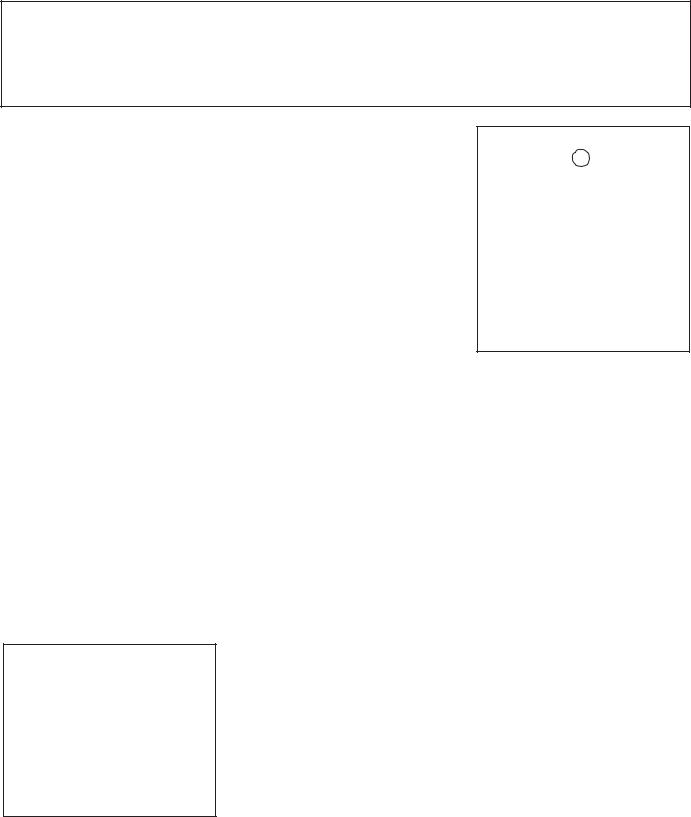
Section Four: USING THE COOKTOP
Using the Grill
A Ventilating Hood of adequate cubic-feet-per-minute capacity vented to the outside of the house is recommended for installation above the range and grill. For most kitchens with a wall mounted hood, a certified hood is recommended. The hood must be installed according to installation instructions furnished with the hood and local building code requirements. Refer to ventilation requirements in the Installation Instructions for additional information.
THE GRILL
(Available on some models)
When cooking food on the grill you will achieve the same flavor as meat cooked on an outdoor grill.
This flavor is actually created by the fats and juices that are brought to the surface of the food and seared by the intense heat from the stainless steel radiant.
Most types of foods, steaks, chops, patties, poultry pieces, etc. cook somewhat faster on the gas grill with its constant regulated heat than on an ordinary charcoal grill.
Your new Thermador Professional® grill is equipped with an aluminized steel U-shaped tube burner typical of those used in restaurants. Automatic ignition is used to eliminate the continuous pilots found on restaurant grills. The grill burner is rated at 18,000 BTU/HR.
Note: When used with propane gas, a slight pop or flash may occur at the burner ports a few seconds after the burner has been turned off. This usually occurs after the burner has been on awhile. This is normal.
AUTOMATIC
REIGNITION
The electronic igniter automatically sparks the burner to light. DO NOT TOUCH any burner while the igniters are sparking.
BURNER EFFICIENCY AND FLAME CHARACTERISTICS
The burner flame should be blue in color and stable with no yellow tips, excessive noise or lifting. It should burn completely along both sides of the burner tube.
An improper gas-air mixture may cause either a yellow tipped flame or burner flutter. Have the flame adjusted by a technician. Foreign particles in the gas line may cause an orange flame during initial use. This will disappear with use.
If the flame is uneven, flutters, makes excessive noise or lifts, check to see if the BURNER ports are clogged. If the ports are clogged, use a wire, a straightened paper clip or needle to clear the ports. If the condition persists, contact a service agency for adjustment.
GRILL
Control Knob
CONTROL KNOB
The burner control has an infinite number of heat settings, and there arenofixedpositionsonthecontrol knob between HI and LO. To turn the burner on, press the control knob and rotate it counterclockwise to the LITE position. When the flame has wrapped around the burner, adjust theknobtothedesiredheatsetting.
19
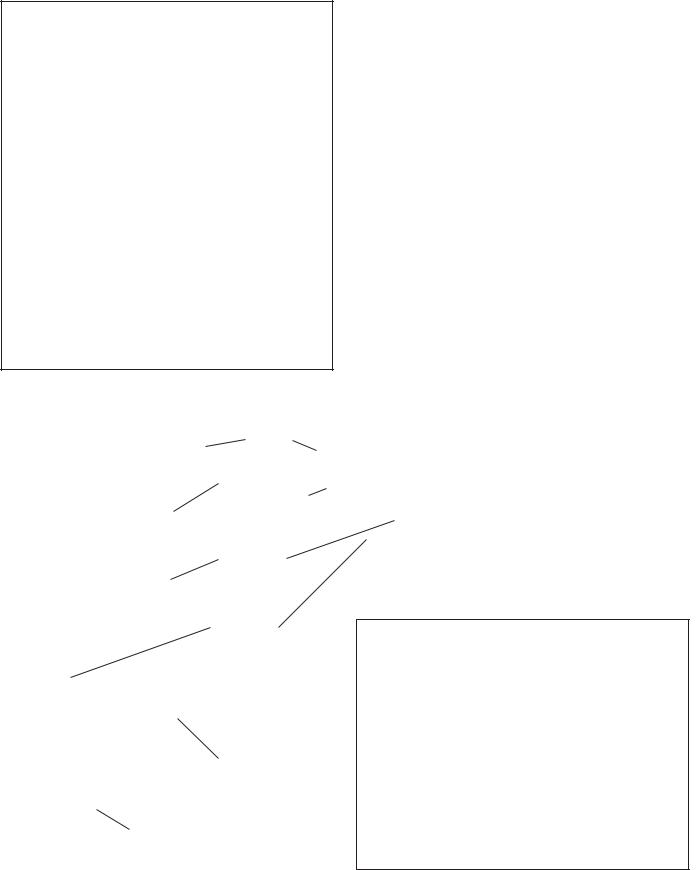
Section Four: USING THE COOKTOP
Disassembly/Assembly of the Grill
 CAUTION:
CAUTION:
•Use extreme care when placing the grill components into the grill compartment. Avoid contacting the ceramic igniter which could break preventing operation of the grill.
•The grill must be assembled as shown. The drip tray heat shields must be in place, and the burner must be properly positioned relative to the gas supply. Incorrect assembly of the grill may result in unsafe or hazardous conditions during operation.
•The grill radiant must be in place for proper operation of the grill.
•Do not leave the grill unattended while in use.
•Do not use charcoal briquettes or coals of any kind.
Follow the steps below to disassemble the components in the grill box.
A.Remove the grill grate, stainless steel radiant and burner from the grill box.
B.Remove the heat deflector from the slots on the front panel of the grill box.
C.Remove the rectangular drip pan inside the grill box as shown below.
Re-assembly
A.Replace the drip pan and heat deflector.
B.Insert the end of the burner into the slots at the back of the grill box. Insert the tab on front of the burner into slot in the heat deflector.
C.The stainless steel radiant lies on two (2) studs on each end of the grill can.
D.Place the grill grate, with raised food containment rail oriented towards the grill box rear.
Exploded Views and Side View of Grill
Grill
Grate
Stainless
Steel Radiant
U-shaped burner
Heat
Deflector
Grill Box
Drip Pan
Burner placement in slots in back of grill
20

Section Four: USING THE COOKTOP
COOKING ON THE GRILL
•The burner should light within approximately 5 seconds.
•Preheat grill for 10 to 15 minutes minimum. The hot grill sears the food, sealing in the juices. The longer the preheat, the faster the meat browns and the darker the grill marks.
•Grilling requires high heat for searing and proper browning. Most foods are cooked at the higher heat settings for most of the cooking time. However, when grilling large pieces of meat or poultry, it may be necessary to turn the heat to a lower setting after the initial browning. This cooks the food through without burning the outside.
•Foods cooked for a long time or basted with a sugary marinade many need a lower heat setting near the end of the cooking time.
•After grilling and the food has been removed, turn the knob to HI and burn off any excess grease which has accumulated on the stainless steel radiant.
•Use a brass wire brush, dipped in hot water, to loosen food particles from the grate.
•When the grill has cooled, clean the drip tray, radiant, heat deflector and compartment. Wipe the U-shaped burner with a damp cloth.
Using the Grill
GRILLING Suggestions
Trim any excess fat from the meat before cooking. Cut slits in the remaining fat around the edges at 2" (51 mm) intervals.
Brush on basting sauce toward the end of cooking.
Use a spatula or tongs instead of a fork to turn the meat. A fork punctures the meat and lets the juices run out.
Add seasoning or salt after grilling.
The grill grate has side and rear rails designed to make foods easier to turn with a spatula.
After the juices begin to bubble to the surface, turn the meat only once. This helps keep the juices in the meat.
Some pieces of meat and poultry cook faster than others. Move those pieces to the cooler area of the grill until the rest have finished.
The doneness of meat is affected by the thickness of the cut. Chefs say it is impossible to have a rare doneness with a thin cut.
Do not leave the grill unattended while cooking.
Handling Excessive Flare-Ups
The intense heat needed for grilling may also cause flareups due to grease dripping on the stainless steel radiant.
If flare-ups occur, use a long handled spatula to move the food to another area of the grill.
Should flare-ups become excessive, remove the food from the grill and turn off the burner.
Excessive flames occur when cooking meat with extra fat, i.e. 30% ground beef, untrimmed steaks, lamb chops, etc.
Be cautious when turning meat over.
It is important that grilling be supervised at all times.
21
Section Four: USING THE COOKTOP
Grill Cooking Recommendations
Food |
Weight or |
Control |
Total Suggested |
Special Instructions |
|
|
|
Thickness |
Setting |
Cooking Time |
and Tips |
|
|
|
|
|
|
|
|
|
|
|
|
MEATS |
|
|
|
|
|
Beef |
|
|
|
|
|
Hamburgers |
1/2 to 3/4 inch |
MED |
14 to 18 minutes |
Grill, turning once when |
|
|
|
(13 mm to 19 mm) |
|
|
juices rise to the surface. |
|
|
|
HI |
12 to 15 minutes |
Do not leave hamburgers |
|
|
|
|
|
unattended since a flare |
|
|
|
|
|
up can occur quickly. |
Steaks |
|
|
|
|
|
|
|
|
|
||
Rib, Club, |
|
|
|
|
|
Tenderloin, |
|
|
|
|
|
Porterhouse, |
|
|
|
|
|
T-Bone, |
|
|
|
|
|
Sirloin |
|
|
|
|
|
Rare |
1" (25 mm) |
HI |
10 to 14 minutes |
Remove excess fat from |
|
(140°F) |
1-1/2" (38 mm) |
HI |
13 to 18 minutes |
edge. Slash remaining fat |
|
|
|
|
|
|
at 2-inch (51 mm) intervals. |
|
|
|
|
|
Grill, turning once. |
Medium |
1" (25 mm) |
MED to |
14 to 22 minutes |
|
|
(160°F) |
1-1/2" (38 mm) |
HI |
18 to 27 minutes |
|
|
Well-Done |
1" (25 mm) |
MED |
22 to 32 minutes |
|
|
(170°F) |
|
1-1/2" (38 mm) |
MED |
27 to 37 minutes |
|
Lamb |
|
|
|
|
|
Chops & |
|
|
|
|
|
Steaks |
|
|
|
|
|
Rare |
1" (25 mm) |
HI |
12 to 15 minutes |
Remove excess fat from |
|
(140°F) |
1-1/2" (38 mm) |
HI |
14 to 18 minutes |
edge. Slash remaining fat |
|
|
|
|
|
|
at 2-inch (51 mm) intervals. |
Medium |
1" (25 mm) |
MED to |
15 to 20 minutes |
Grill, turning once. |
|
|
|||||
(16°F) |
|
|
|
|
|
1-1/2" (38 mm) |
HI |
18 to 25 minutes |
|
||
Well-Done |
1" (25 mm) |
MED |
20 to 30 minutes |
|
|
(170°F) |
|
|
|
|
|
Pork |
|
|
|
|
|
Chops |
1/2" (13 mm) |
MED |
20 to 40 minutes |
Remove excess fat from |
|
|
|
1" (25 mm) |
MED |
35 to 60 minutes |
edge. Slash remaining fat |
|
|
|
|
|
at 2-inch (51 mm) intervals. |
|
|
|
|
|
Grill, turning once. |
|
|
|
|
|
Cook well done. |
|
|
|
|
|
|
Ribs |
|
MED |
45 to 60 minutes |
Grill, turning occasionally. |
|
|
|
|
|
|
During last few minutes |
|
|
|
|
|
brush with barbecue sauce, |
|
|
|
|
|
turn several times. |
22
Section Four: USING THE COOKTOP
Grill Cooking Recommendations
Food |
Weight or |
Control |
Total Suggested |
Special Instructions |
|
Thickness |
Setting |
Cooking Time |
and Tips |
|
|
|
|
|
|
|
|
|
|
MEATS |
|
|
|
|
Pork |
|
|
|
|
Ham Steaks |
|
|
|
Remove excess fat from |
(precooked) |
1/2 inch |
HI |
4 to 8 minutes |
edge. Slash remaining fat at |
|
|
|
|
2-inch (51 mm) intervals. |
|
|
|
|
Grill, turning once. |
Hot Dogs |
|
MED |
5 to 10 minutes |
Slit skin. Grill, turning once. |
|
|
|
|
|
POULTRY |
|
|
|
|
Chicken |
|
|
|
|
Broiler/Flyer |
2 to 3 pounds |
LO or |
1 to 1-1/2 hours |
Place skin side up. Grill, |
Halved or |
|
MED |
40 to 60 minutes |
turning 2 to 3 times. |
Quartered |
|
|
|
|
Breasts, bone-in |
|
MED |
30 to 45 minutes |
|
|
|
|
|
|
FISH AND |
|
|
|
|
SEAFOOD |
|
|
|
|
Steaks |
|
|
|
|
Halibut, |
3/4 to 1 inch |
MED to |
8 to 15 minutes |
Grill, turning once. Brush |
Salmon, |
|
HI |
|
with melted butter, margarine |
Swordfish |
|
|
|
or oil to keep moist. |
Whole |
|
|
|
Grill, turning once. Brush |
Catfish, |
8 to 16 ounces |
MED to |
20 to 30 minutes |
with melted butter, |
Rainbow |
|
HI |
|
margarine or oil to |
Trout |
|
|
|
keep moist. |
|
|
|
|
|
23
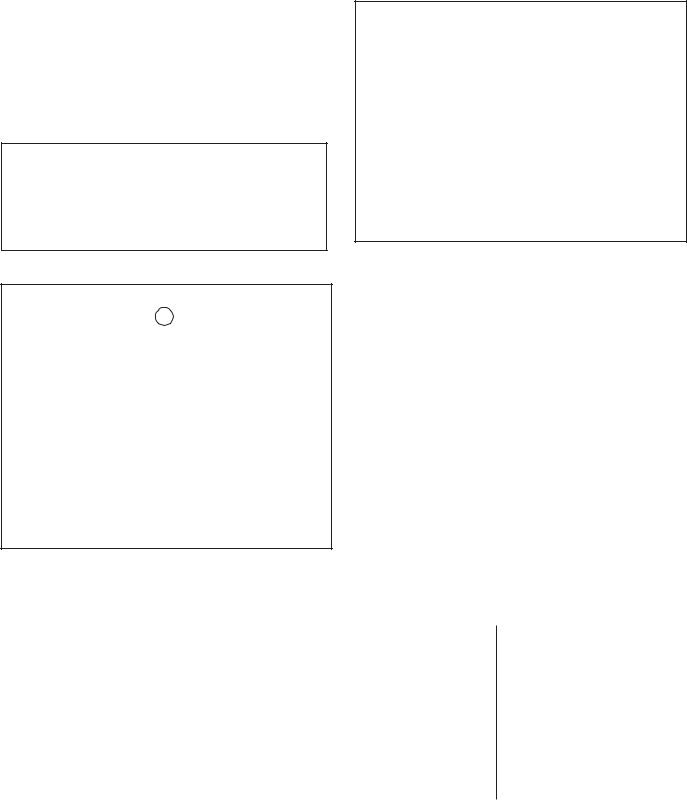
Section Four: USING THE COOKTOP
About the Electric Griddle
(Available on some models)
DESCRIPTION
The built in griddle is made of restaurant quality aluminum coated with titanium. This produces a surface with even heat that is easy to clean.
A maple chopping block and stainless steel cover are available as accessories and are purchased separately. Both are sized to fit on top of the surface when the griddle is not being used.
The maple chopping block and stainless steel cover must be removed before turning the griddle on.
•The electric griddle element is rated 120 volts AC, 1,600 watts.
 CAUTION:
CAUTION:
The griddle element is hot after use. Allow sufficient time for griddle components to cool before cleaning.
CONTROL KNOB
GRIDDLE
Control Knob
•The griddle is electronically controlled with temperatures marked on the knob from 150ºF to 500°F.
•There are no fixed settings on the knob.
•Press and turn the knob counter-clockwise to the temperature setting.
PREPARING THE GRIDDLE
The griddle must be tilted slightly forward for optimum performance. See Installation Manual for procedure to check and adjust griddle for proper tilt of griddle plate. During installation, the installer is responsible for leveling the product.
The griddle plate should be washed with warm soapy
water then rinsed with clear water prior to use. The griddle may be used without any butter, margarine or oil. However, a very small amount may be used to flavor foods.
Any utensil may be used on the griddle surface.
Slide back and lift
Griddle Grease Tray
Griddle Grease Tray
•Push the tray under the front edge of the griddle overhang to catch grease or food residue.
•Clean the tray after every use. When removing the tray, use care when tipping it so that the contents do not spill.
Cooking on the Griddle
1.Check that the grease tray is tucked under the griddle plate overhang.
2.Turn the knob to the cooking temperature to preheat the griddle.
3.Preheat 10 to 12 minutes.
4.Add butter, margarine, oil or shortening for more flavor.
5.Add the food and cook.
6.Care should be taken that the surface is not gouged when utensils are used.
*5,''/( &22.,1* 5(&200(1'$7,216
)22' |
6(77,1* |
|
(JJV |
) WR ) |
& WR & |
%DFRQ %UHDNIDVW 6DXVDJH ) WR ) |
& WR & |
|
7RDVWHG 6DQGZLFKHV |
) WR ) |
& WR & |
%RQHOHVV &KLFNHQ %UHDVWV ) WR ) |
& WR & |
|
%RQHOHVV 3RUN &KRSV WKLFN ) WR ) |
& WR & |
|
+DP 6OLFHV WKLFN ) WR ) & WR & |
||
3DQFDNHV )UHQFK 7RDVW |
) WR ) |
& WR & |
3RWDWRHV +DVK %URZQV |
) WR ) |
& WR & |
24
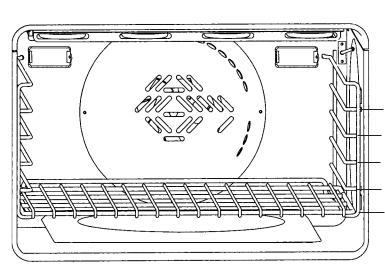
Section FIVE: USING THE COOKTOP
TIPS FOR BAKE
Preheating the oven
Preheat the oven before cooking any foods, including large pieces of meat or poultry. See your recipe for preheating recommendation. Preheating time depends on the temperature setting and the number of racks in the oven.
Getting the Best Results
▲Minimize opening the door:
•Use a minute timer.
•Use the interior oven lights.
▲Choose the right size utensil; use the utensil recommended in the recipe.
▲Store the broiler pans outside the ovens. An extra pan without food, affects the browning and cooking.
▲The type of pan used affects the browning:
•For tender, golden brown crusts, use light non-stick/ anodized or shiny metal utensils.
•For brown crisp crusts, use dark non-stick/anodized or dark, dull metal utensils or glassbakeware.Thesemay require lowering the bake temperature 25°F.
Bakeware Type
▲Metal bakeware (with or without a non-stick finish), heat-proof glass, glassceramic, pottery, or other utensils suitable for the oven.
▲Suitable cookie sheets have a small lip on one side only. Heavy sheets or those with more than one side may affect the baking time.
▲The 36" and 48" oven will hold a full-sized commercial baking sheet (18" x 26").
Bake
Rack Positions
5
4
3
2
1
Large Electric Main Oven with Rack Level Positions
Bake Rack Positions
Rack level positions in the oven are numbered like an elevator. Number one level is the lowest and number five level is at the top.
LARGE MAIN OVEN
One Rack Baking
•The Bake mode is best for baking on one rack with rack level #3 used for most baked items. If the item is tall, such as an angel food cake, rack level #2 may be used. Pies are best baked on rack level #2 to make certain the bottom of the crust is done without over browning the top. When large pieces of meat or poultry are roasted , such as a prime rib of beef or a turkey, rack level #2 is the preferred rack.
Two Rack Baking
•Rack levels #2 and #5 may be used when baking on two levels. Foods such as cookies and biscuits work well using these two racks. Casserole dishes may also be baked using these two levels. The convection mode may also be used.
Three Rack Baking
•If three-rack baking is desired, the Convection Bake mode should be used.
SECONDARY OVEN (PD48 Models)
•Baking on rack #3 will result in the best product. When additional height is needed, rack #2 may be used. The use of rack #2 with pies will result in a crisp bottom crust without over baking the top.
•If two rack baking is desired in this small oven, use racks #2 and #5. For best results, stagger baking pans front to rear with the pan on rack #2 toward the rear and the pan on rack #5 toward the front.
■Placement
▲Allow at least 1" of space between the pans and the oven walls so heat can circulate around each pan.
▲Stagger baking utensils so that one is not directly above another. Allow 1-1/2" above and below each pan.
25

Section FIVE: USING THE COOKTOP
Convection Bake
TIPS FOR CONVECTION BAKE
Preheating the Oven
Preheat the oven before cooking any foods, including large pieces of meat or poultry. See your recipe for preheating recommendation. Preheating time depends on the temperature setting and the number of racks in the oven.
High Altitude Baking
When baking at high altitudes, in either BAKE or CONVECTION BAKE, recipes and baking times vary. For accurate information, write the Extension Service, Colorado State University, Fort Collins, Colorado 80521. There may be a cost for the bulletins. Specify the type of information you want (example: cakes, cookies, breads, etc.).
Condensation
It is normal for a certain amount of moisture to evaporate from the food during any cooking process. The amount depends on the moisture content of the food. The moisture will condense on any surface cooler than the inside of theoven,suchasthecontrolpanel.
Temperature Setting
When using Convection Bake, reduce the temperature recommended in the recipe by 25°F.
When roasting meats, check internal temperature prior to time recommendedbyrecipetoprevent overcooking.Whenroastingmeats in convection, do not reduce temperature setting.
RACK POSITIONS
Large Main Oven
One Rack Baking
•When baking on one rack, best results are obtained in the bake mode (see Bake).
•When roasting a turkey or a large piece of meat, convection bake may be used. Rack #2 is the most appropriate rack.
Two Rack Baking
•Racks #2 and #5 are most appropriate when using the convection bake mode. Pans should not be staggered but the baking pan on rack #2 should be placed directly under the one on rack #5.
•This may be used for cakes, cookies, biscuits and other foods for which two rack baking is desirable.
•When several casseroles , frozen pies or cakes are to be baked, use racks #2 and #5.
•These two racks can also be used for a large oven meal.
Three Rack Baking
•When several sheets of cookies are to be baked, bake them on racks #1, #3,and #5. Place the baking sheets directly above each other on the respective racks to allow air to flow around the baking sheets.
Bakeware Type
•Aluminum bakeware gives the best browning results.
•Cookie sheets with only two sides give the best results. Aluminum commercial half-sheets or professional cooking utensils may be used.
Placement
•For better browning, utensils such as cookie sheets, jelly roll pans and rectangular baking pans should be placed crosswise on the rack with the shorter sides on the right and the left. This allows the air to circulate freely.
•When baking on more than one rack, pans should not be staggered.
■ WHEN USING THE OVEN IN ANY MODE
CAUTION |
Never use aluminum foil to cover the oven racks or to line |
|
|
|
the oven. It can damage the oven and cause a fire hazard if |
|
heat is trapped under it. See Page 4. |
26
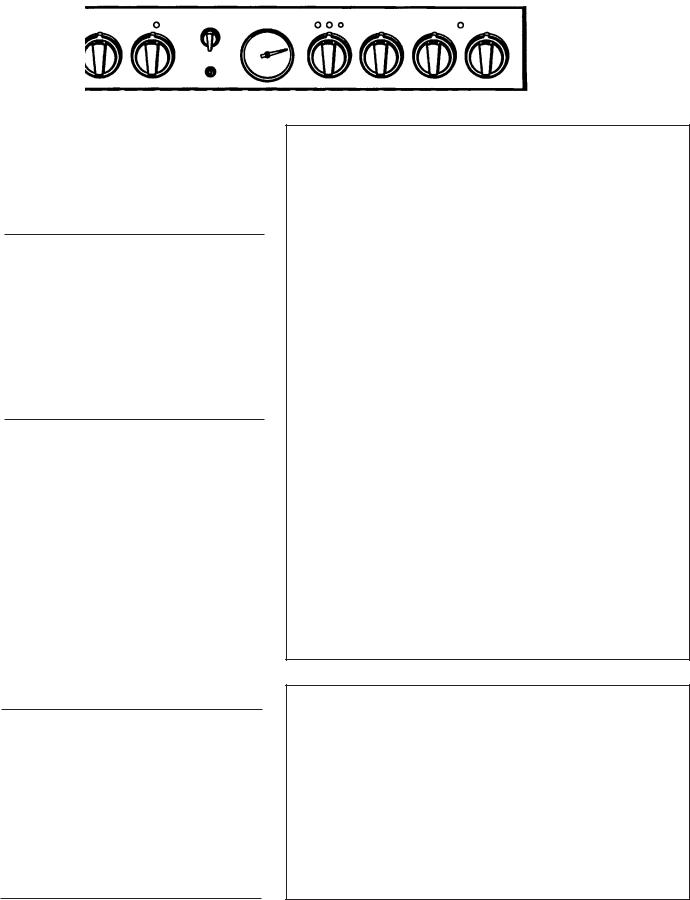
Section FIVE: USING THE COOKTOP
Setting Bake / Convection Bake
BAKE/CONVECTION BAKE
These cooking modes are for baking, roasting or warming using one, two or three racks.
PD304 OVEN CONTROL KNOBS
NOTE: When the oven is turned on, the cooling blower will turn on automatically. This is normal. When the oven is turned off, the cooling blower remains on until the oven temperature cools to 325°F. The cooling blower will also operate during Broil and during the Self-Cleaning cycle.
If the blower is not running during these modes, do not use the oven. Call a qualified appliance technician to repair the unit.
SECONDARY OVEN CONTROL KNOBS (PD48 only)
To Set the ELECTRIC Oven
1.Select BAKE or CONVECTION BAKE using the Selector switch.
2.Set Temperature using the Oven Control Knob.
▲If using CONVECTION BAKE, set the oven control knob 25° below temperature suggested in recipe. No changes in temperature if roasting meats or poultry.
▲The convection fan turns on six minutes after the oven is turned on, if CONVECTION BAKE is selected.
▲The OVEN and HEATING lights turn on.
▲The temperature indicator will start to rotate toward the temperature setting.
▲The HEATING light cycles off and on. The oven is preheated when the HEATING light cycles off the first time.
▲The temperature indicator will reflect the temperature setting.
▲The needle of the temperature indicator will move to the new selected temperature if the temperature setting is increased or decreased. The gauge is for reference only.
▲The OVEN ON light illuminates and remains on until the OFF Selector switch is turned off or the oven control knob is turned to the OFF position.
▲As the oven cools down, the temperature indicator will start to decline, reflecting the actual oven temperature.
To Set the Secondary Oven (PD48 only)
1.Select BAKE using Selector switch.
2.Set Temperature using the Oven Control Knob.
▲The OVEN ON light turns on.
▲The HEATING light turns on.
▲The HEATING light cycles off and on. The oven is preheated when the HEATING light cycles off the first time.
▲The OVEN ON light remains on until the Selector switch is turned off.
Note: Temperature indicator is for the main oven only.
27
